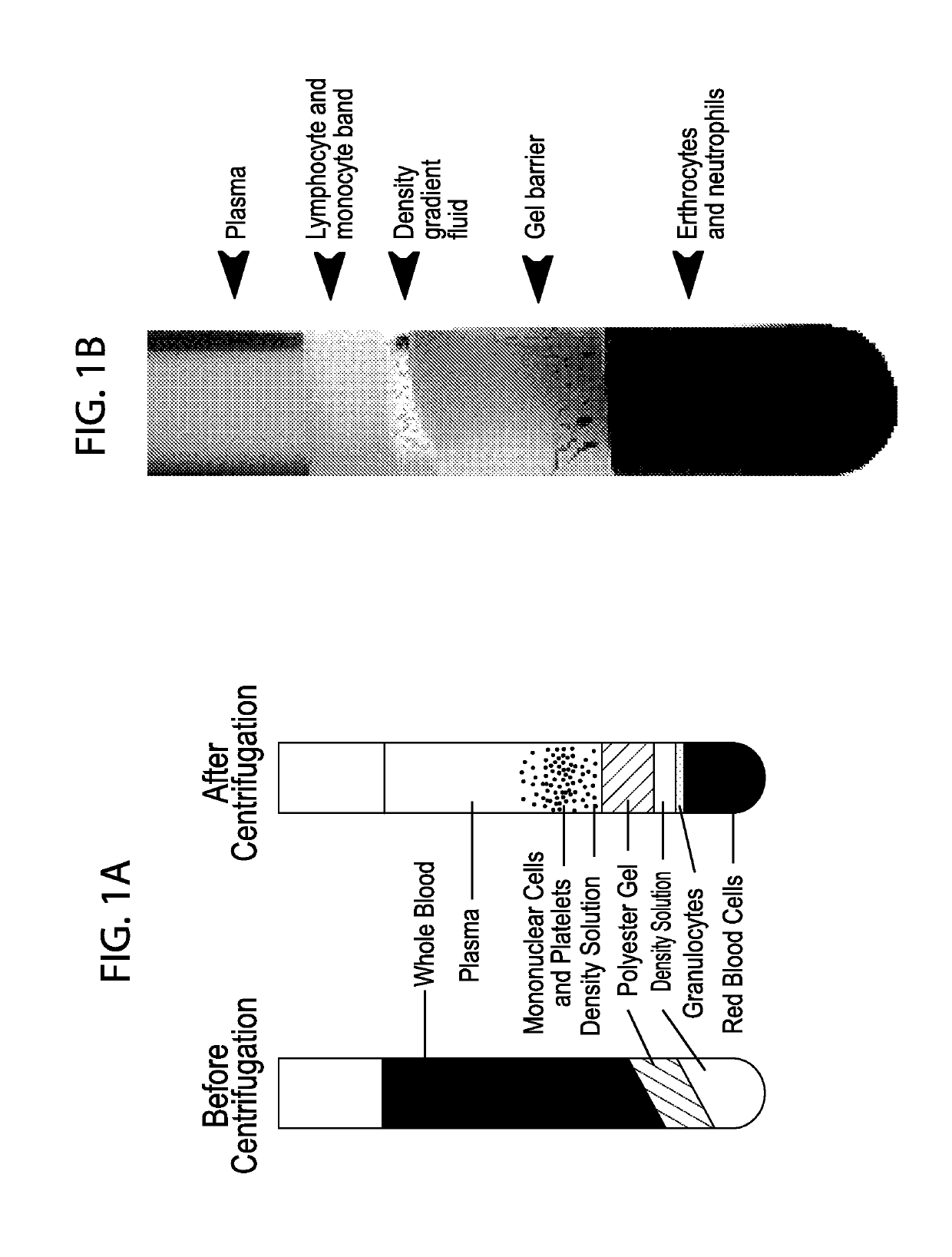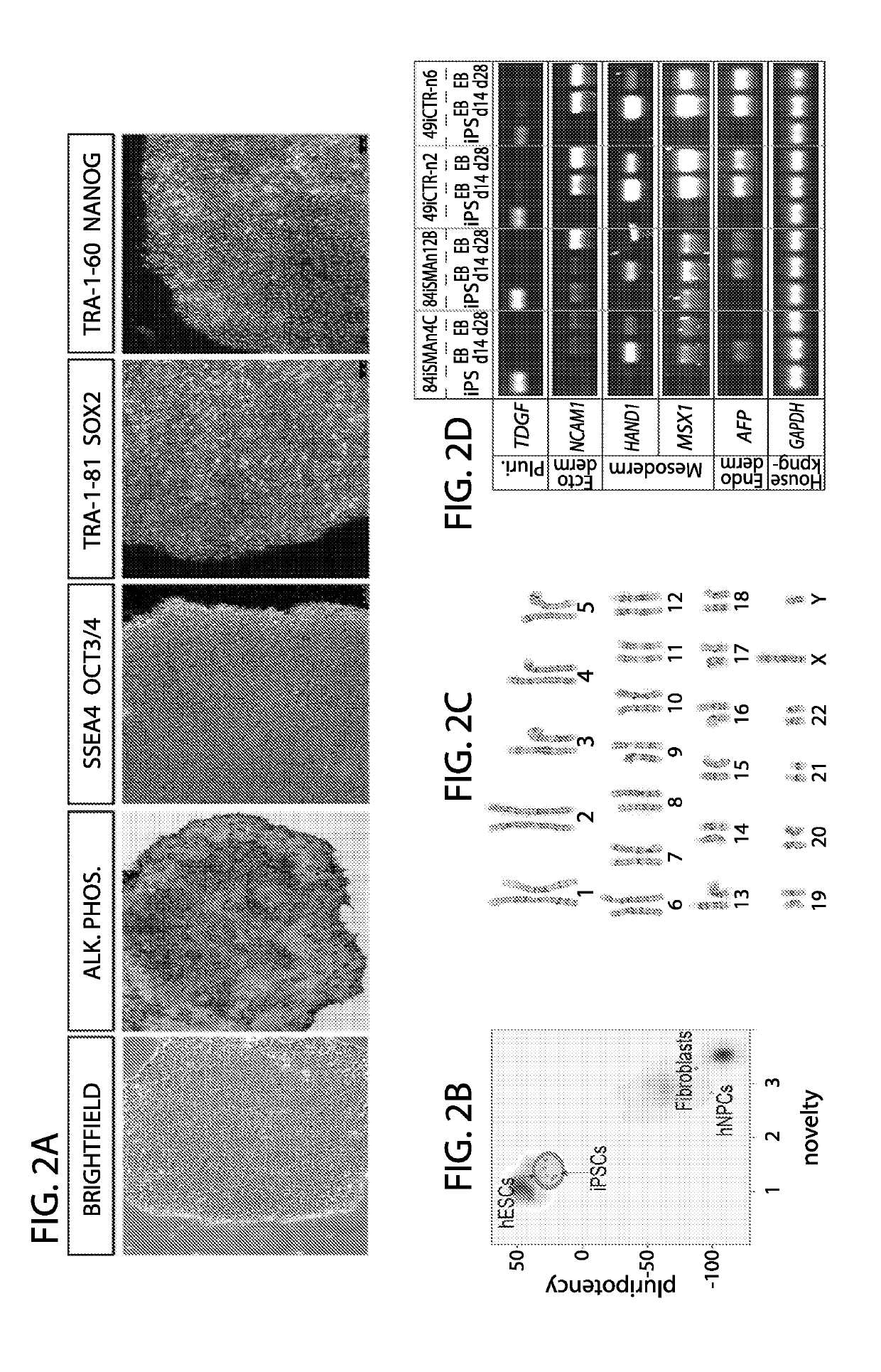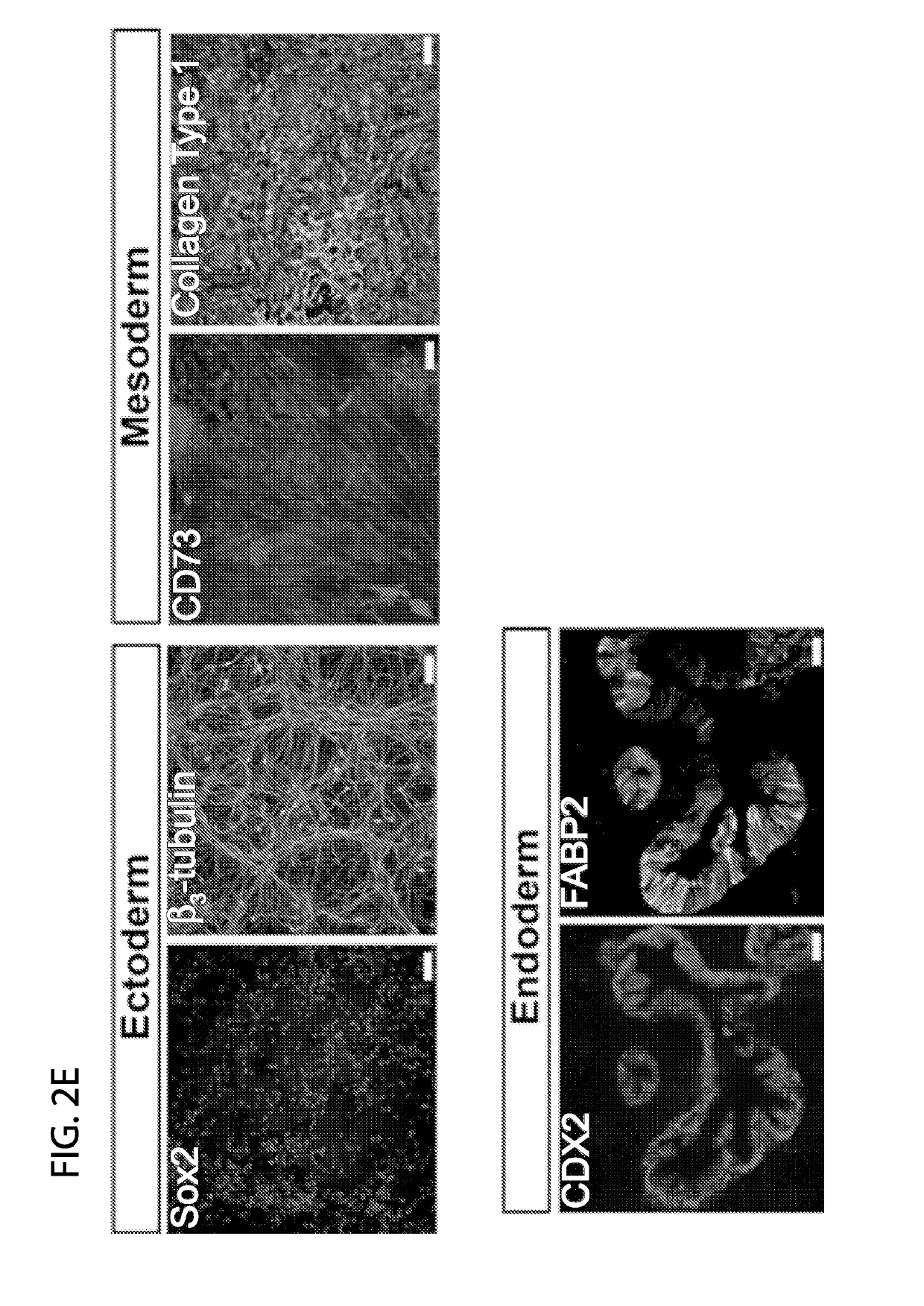Novel and efficient method for reprogramming blood to induced pluripotent stem cells
a technology of induced pluripotent stem cells and efficient reprogramming, which is applied in the field of regenerative medicine, can solve the problems of source material but may not be the best choice for directed reprogramming
- Summary
- Abstract
- Description
- Claims
- Application Information
AI Technical Summary
Benefits of technology
Problems solved by technology
Method used
Image
Examples
example 1
General iPSC Reprogramming Protocol for Blood
[0071]Generally, the reprogramming method involves the following steps. Frozen peripheral blood mononuclear cells (PBMCs), or freshly isolated PBMCs can be used. Treated cell culture surfaces can be used for plating thawed or freshly isolated PBMS. This includes, for example, cell culture surfaces treated with mouse embryonic feeders (MEF) or extracellular matrix laminin L-521A. An expression plasmid mixture is provided, with the plasmid mixture encoding a combination of pluripotency factors. Plasmids are introduced to PBMCs, by using for example, nucleofection, and thereafter placed on the treated cell culture surface. After 2 days of culturing, reprogramming media is introduced, and replenished until colonies are formed.
example 2
Peripheral Blood Collection and Minimal Processing for Reprogramming
[0072]The Inventors have established processes to isolate lymphocytes from freshly collected or commercial sources of human or mammalian peripheral blood (PB). The preferred format for the collection and shipment of such samples is the CPT tubes. This format allows the supplier to centrifuge the vacutainer(s) and separate the red blood cells from the plasma components prior to shipping. The protocol provides for the isolation of PBMCs from the plasma layer of the CPT tubes.
[0073]Optional tests: Prior to opening the Vacutainer, several disease state tests can be performed, including testing for HIV, Hepatitis B and C, and syphilis. The latter test results should be made available within 1-3 working days from the collection date. If there is a positive result, the sample(s) will be properly discarded, and all laboratory equipment that was used to process the samples will be decontaminated.
example 3
Collection Procedure
[0074](1) Red blood cells and platelets are depleted using containers. BD Vacutainer® CPT™ Tube with Sodium Citrate should be at room temperature (18-25° C.) and properly labeled for patient identification. Spray the CPT Vacutainer lightly with 70% isopropanol / ethanol, wipe the alcohol off.
[0075](2) Blood collection is into three (3) 8 ml CPT tubes per sample using the standard technique for BD Vacutainer® Evacuated Blood Collection Tubes. After collection, tube is stored upright at room temperature until centrifugation. Blood samples should be centrifuged within two hours of blood collection for best results.
[0076](3) Tube / blood sample is centrifuged at room temperature (18-25° C.) in a horizontal rotor (swing-out head) for a minimum of 20 minutes (up to 30 minutes) at 1500 to 1800 RCF (Relative Centrifugal Force).
[0077](4) For blood shipped in CPT tubes and reprogramming is performed within 24 hours: After centrifugation, mononuclear cells and platelets will be...
PUM
| Property | Measurement | Unit |
|---|---|---|
| temperature | aaaaa | aaaaa |
| Time | aaaaa | aaaaa |
| total volume | aaaaa | aaaaa |
Abstract
Description
Claims
Application Information
 Login to View More
Login to View More - R&D
- Intellectual Property
- Life Sciences
- Materials
- Tech Scout
- Unparalleled Data Quality
- Higher Quality Content
- 60% Fewer Hallucinations
Browse by: Latest US Patents, China's latest patents, Technical Efficacy Thesaurus, Application Domain, Technology Topic, Popular Technical Reports.
© 2025 PatSnap. All rights reserved.Legal|Privacy policy|Modern Slavery Act Transparency Statement|Sitemap|About US| Contact US: help@patsnap.com



